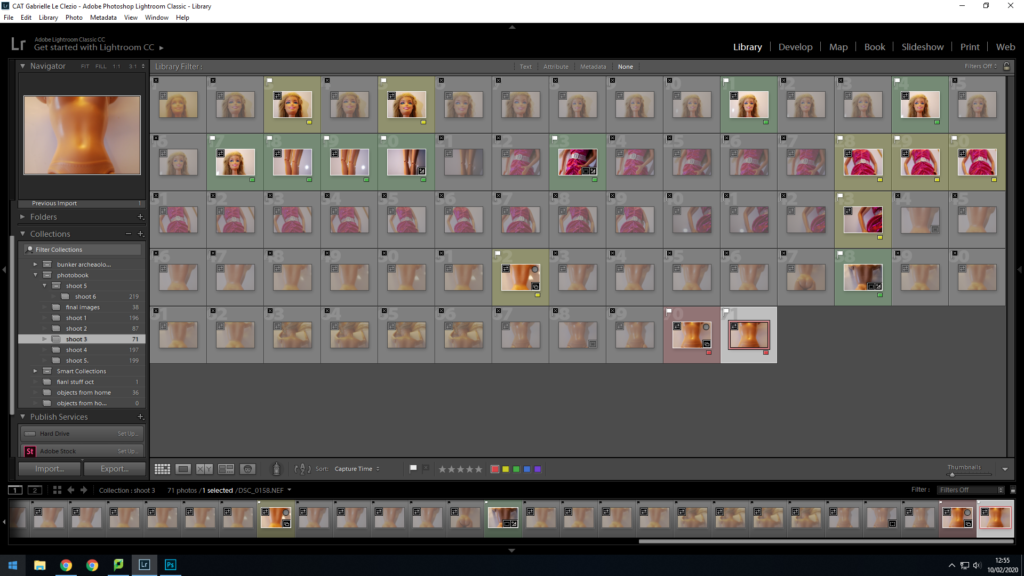
This shoot went really well. I focused more on the Barbie’s body instead of just it’s face.

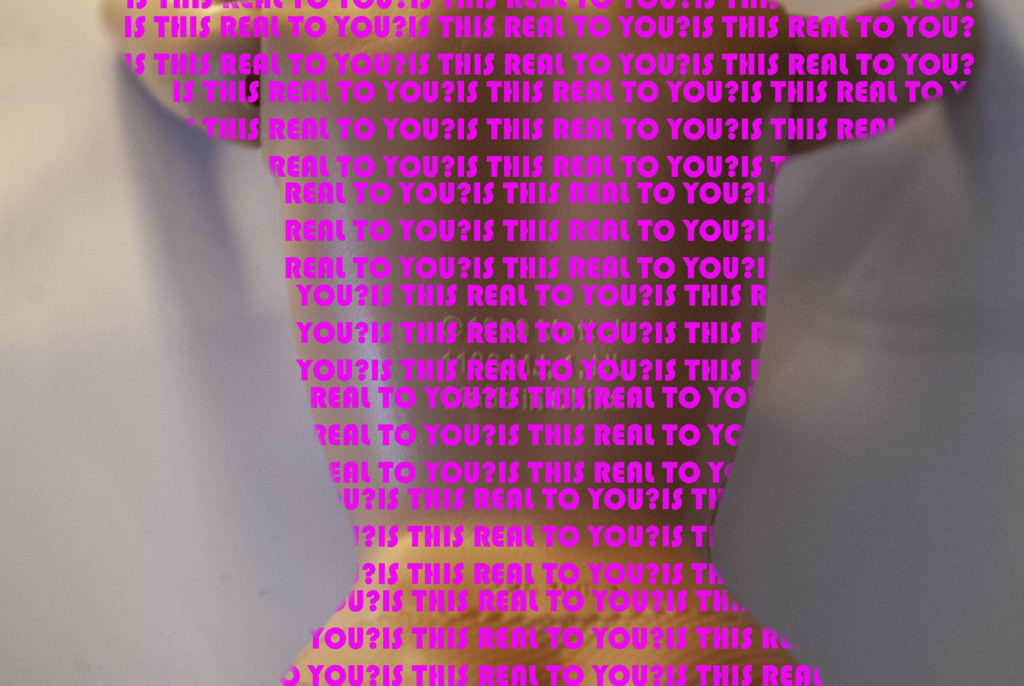
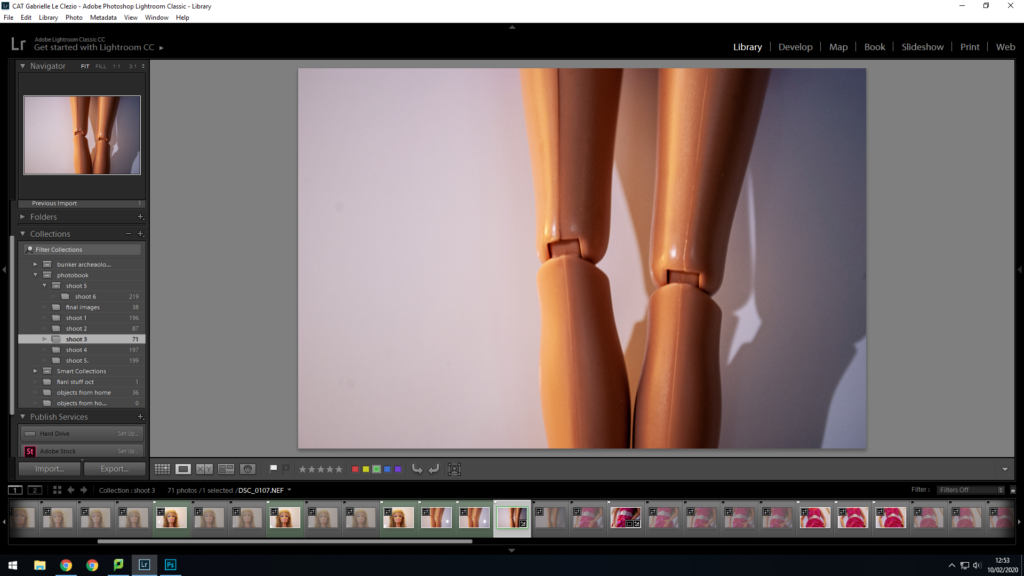


This shoot went really well. I focused more on the Barbie’s body instead of just it’s face.





My second shoot went really well other than the fact that I was finding it hard to combat some of the shadows but in the end after editing the images I found I liked the shadows because it gaze a sinister vibe to them.

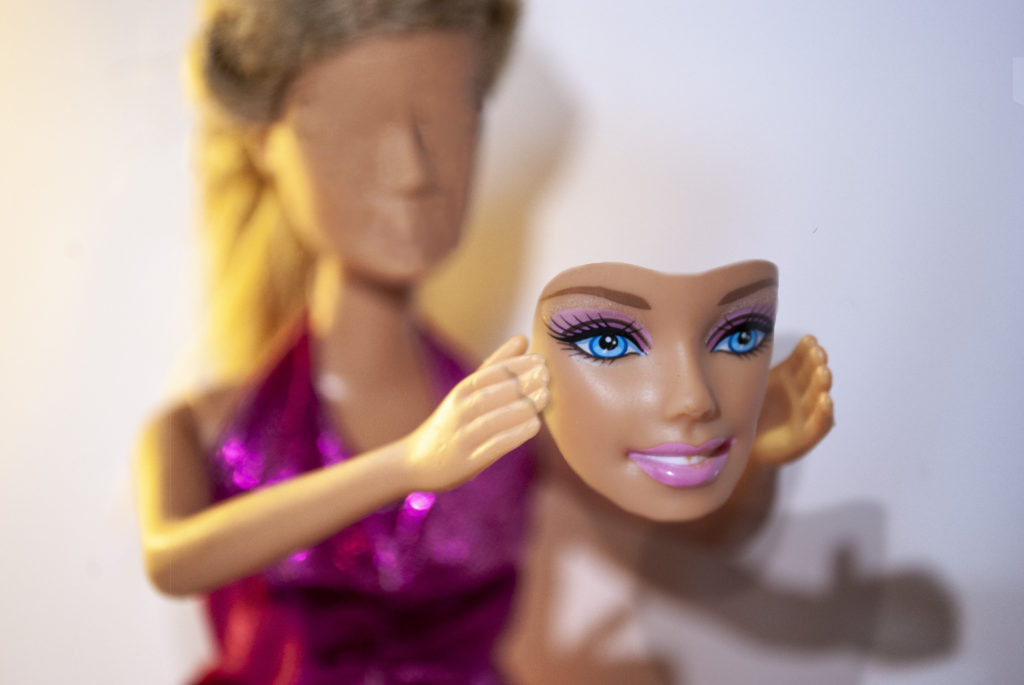
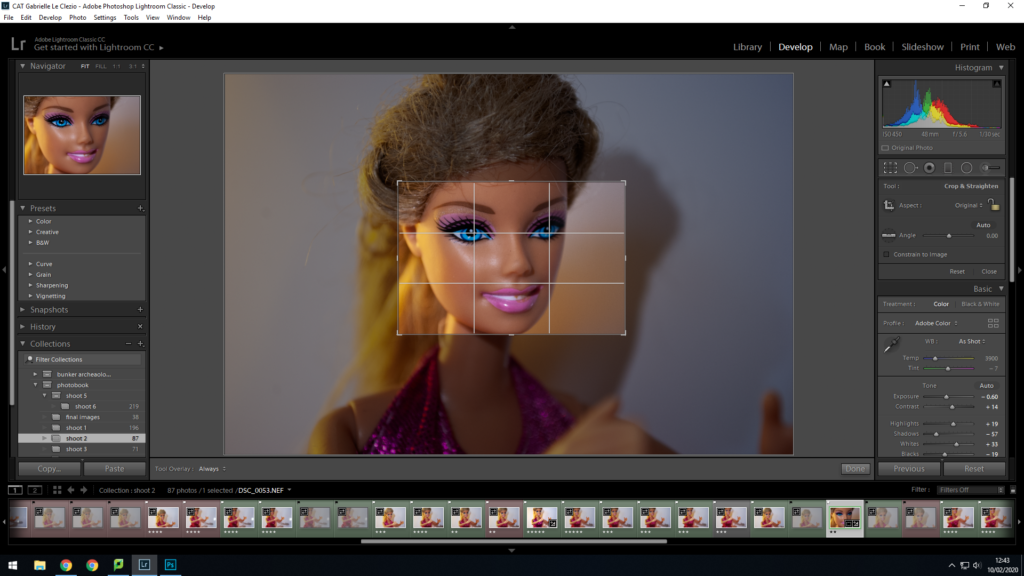
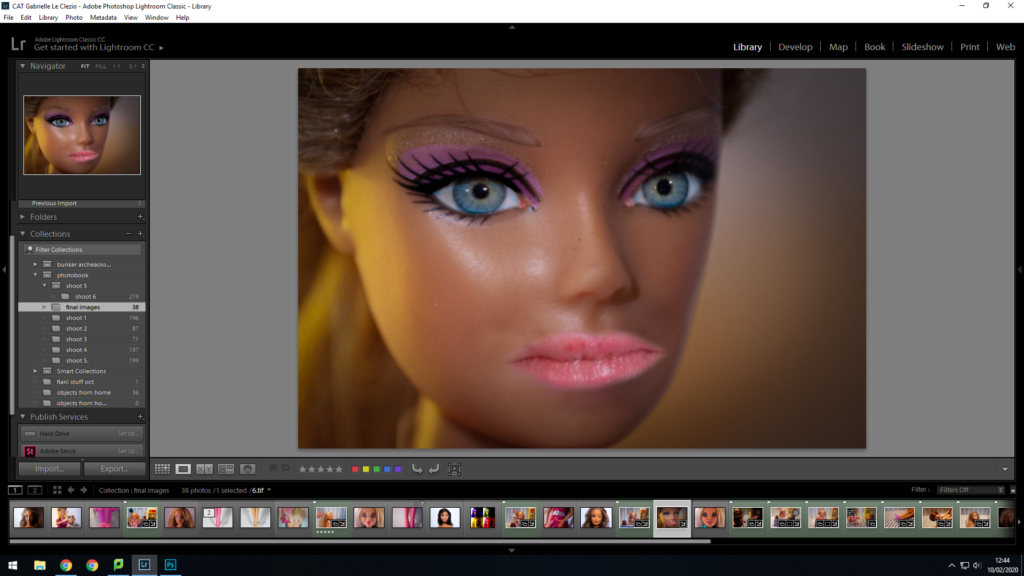
How do social political opinions influence Sheila Bright and Laurie Simmons into constructing reality?
How do social and political opinions influence the work of Sheila Bright and Lauri Simmons in constructing reality
Biblography
–
My personal study will focus on the construction of fantasy within society. Within my work I will explore what creates this fantasy from childhood such as the media, sterotypes and the childish mind. My project will address matters that match my views of society such as the idea of cradle to grave and unrealistic contructs such as unrealistic body images. I plan to uses images of toys and dolls that represent the childish mind and the fantasy society contructed at childhood. I will also take images of real things to represent the awakening due to loss of innocence that comes as you get older. I was inspired by Shiela Pree’s photo series Plastic bodies, which focuses on unrealistic body images and the misrepresentation of women presented in dolls, and the majority of Laurie Simmons’ work such as her series Early Black and white (1976) and Earlier Color Interiors (1978). I’m inspired by their contruction of reality through the childish fantasy.
Biblography
Bright, S. and Van Erp, H. (2019), Photography decoded. London: Octopus Publishing House.
‘The ‘mirror’ cans serve as a metaphor for reality.”
‘The daguerreotype had aspirations to both the realistic and the theatrical….’
‘The question arises: if manipulation is the first thing someone think of..’
‘Daguette’s technique gave a unique image…..photography’s complicated relationship with reality.’
‘truth reality’
‘not just that photography is complicated, but the concepts of realism and reality too.’
‘one can then ask: what are the differences between reality and witness and points of view?’
‘the process of manipulation starts as soon as we frame a person….’
‘At its best, it is a subjective impression that is at the same time both fleeting and enduring -just like any good piece of drama.’
‘Photography has undergone a transformation….’
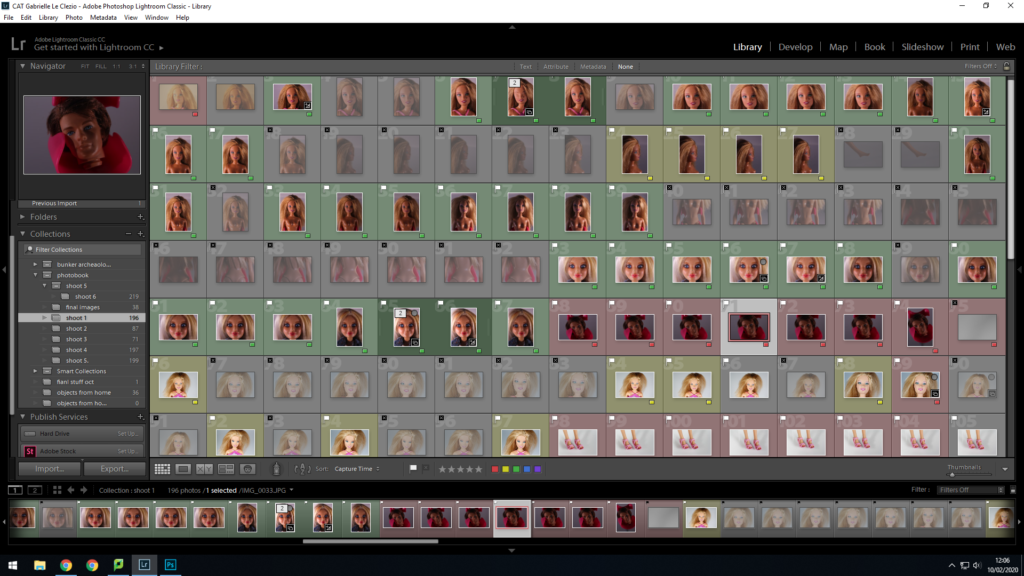
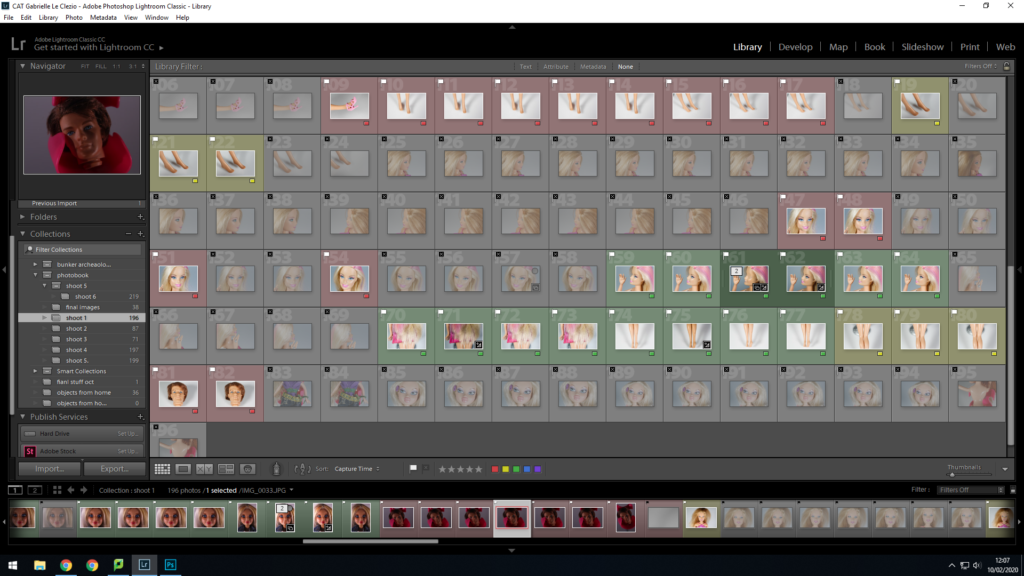
My first Shoot was really successful. The only real problem I had was keeping the dolls upright. I had planned on using a tripod but decided not to because I wanted some real close up. I went into light room and made my selection.I went through them all and flagged the good ones and bad ones. I then color coded the ones I might edit, the ones I may edit and the ones I wont edit. I then adjusted a few of them on light room before editing them in Photoshop.


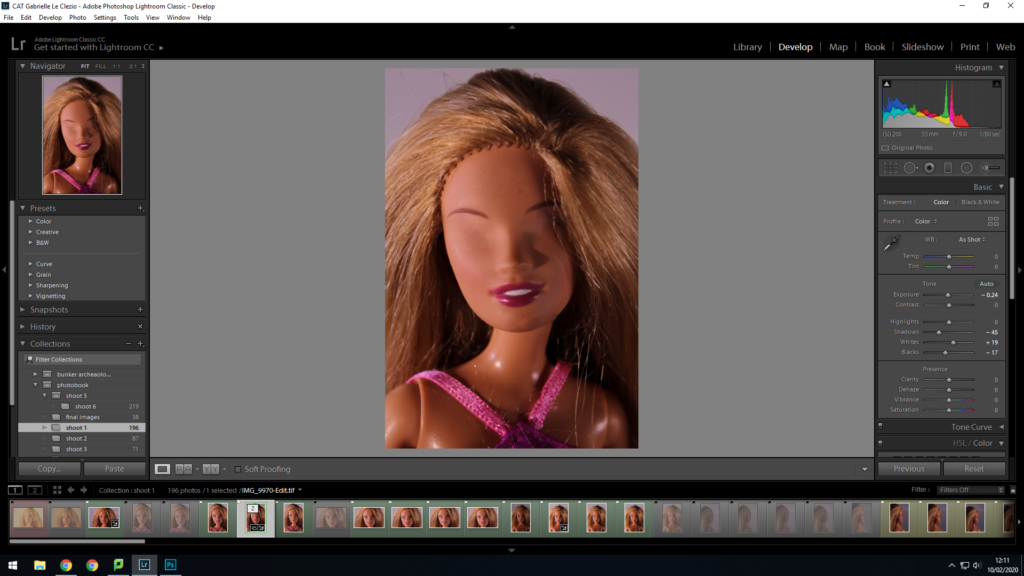
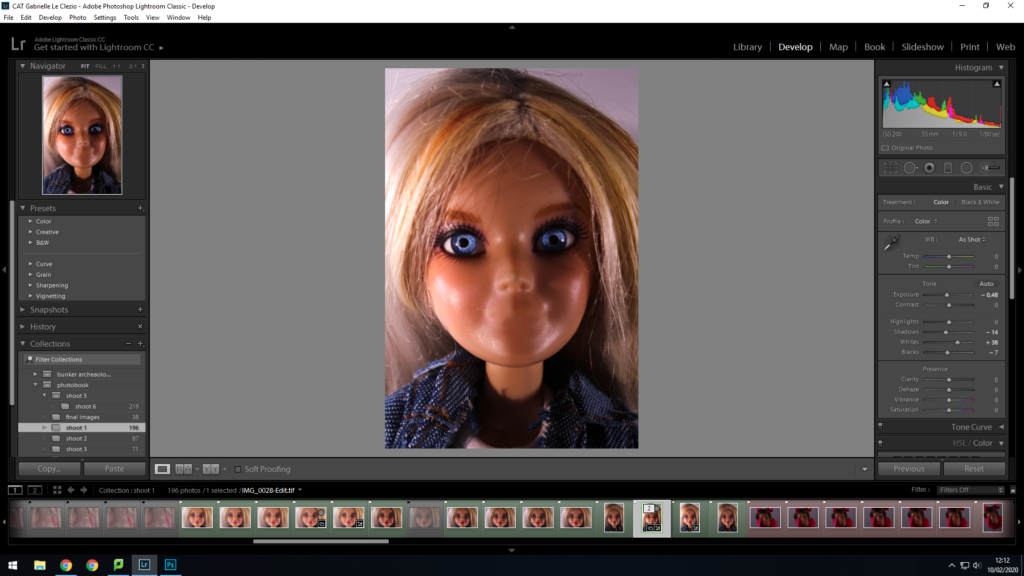
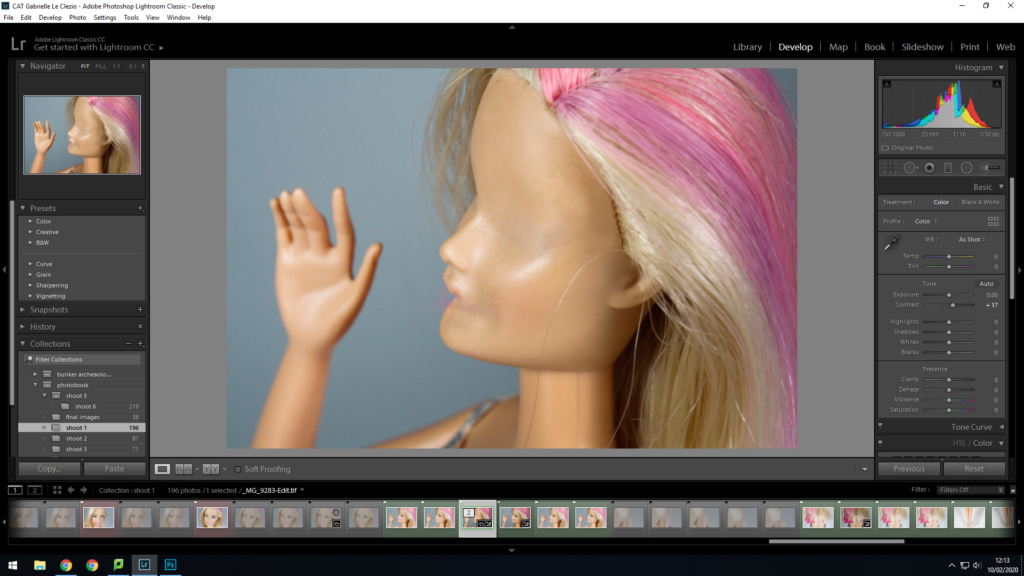



Sheila Pree uses dolls to comment on and explore cultural beauty standards. She took images of dolls and real women and digitally edits them together to show how unrealistic dolls are compared to what a real roman looks like.
My plan is to use this as inspiration but to edit them differently to get my point of view across about unrealistic body and beauty expectations. I plan on taking the images in the studio in order to get well-lit portraits and I’ll be taking direct inspiration from this image of Bright’s (bellow) but editing it in my own way.


This is the image I have been inspired by for my second shoot. It’s by an Instagram account called Trophy Wife Barbie. Her images are have an adult humor to them and are very feminist in the way that she’s documenting what she a real life woman is like but using Barbie. This image is meant to represent how she feels taking off make-up.
My plan is to take images of a doll with her hands out and then use Photoshop to copy the face and make it look like she holding her face and then remove her facial features where her face used to be. It will be like Trophy Wife Barbie’s but her face will be completely gone.

For my third shoot I’m going to look at Bright’s work again however this time not only focusing on portraits but on the bodies of the Doll’s. I plan on editing them with typography like i have done with previous projects in order to incorporate my own style. I plan of writing things like ‘Plastic Fantastic,’ ‘Is this real to you,’ and ‘am I perfect yet?’

For this shoot I’ going to do more portraits in the style of Bright however, I plan of taking well lit images of the doll’s faces and then using nail varnish to remove the painted on make up dolls have. I then plan on editing them together and having one half of the face with the painted on make up and the other half without.


For this shoot I’ve had multiple inspirations. My main inspiration is the Early Interior Series by Laurie Simmons. I have ordered a doll kitchen and I have some miniature dolls and things for the kitchen. I plan on taking images of the doll in the kitchen, which is meant to represent stereotypical gender roles, but then add a twist. After taking some normal images, I plan on taking some but inspired by Instagram account Mariel Clayton (@psycho.barbies). I plan on using fake blood and face paint to give the kitchen images a bit of a comedic but frighting twist. This is meant to represent how some women fight back against these stereotypical roles and beauty representations. It’s also meant to represent how all the generations of girls since the suffragette movement have strove to fight the inequality of the generation before them.
This shoot was inspired by the two image bellow which I found when brainstorming ideas. The point is not the shame people out of plastic surgery but to show the fact that some woman feel like they have to chemically and physically become like plastic in order to think they are beautiful because of the world we live in. I’m going to set up a tale for the doll to like on and a white tissue to go over her to make it simulate being in the clinic and draw the markings from the bellow images onto their faces.



The lighting is artificial you can see the light bulbs on the ceiling. What’s interesting is that the subject, the woman is being illuminated however the photographer in the image is in the dark which is maybe symbolic of the photographer’s job always in the shadows behind the camera.
The image uses the rule of thirds, the image is divided into three parts one with the photographer, one with the woman and one with the camera. This is framed by the pole stands dividing the room.
The work picture for women was produced in 1979. It was produced in response to Edouward Manet’s realism painting Un bar aux Folies Bergere. (below)

Wall’s image, therefore, references popular culture at the time in the way that critics were at the time arguing over the impossibilities of the painting. The image is seen contextual as one of the first moves from an art form from the printed page to the gallery.
The image is technically a tablet photo in the way that Wall was almost reenacting the painting. He’s used the lighting to create the same spatial depth as in the painting. The whole image is meant to represent the mirror of the bar where his ‘barmaid’ has the same absorbed look as the barmaid in the painting and is being observed by a dark figure. Through the male gaze, there is a power relationship between the onlooker, female and male and the onlooker that has been recreated from the painting.

“This body of work addresses the loss of personal identity many women experience, specifically women of colour,” she said.
“American concepts of the “perfect female body” are clearly exemplified through commercialism, portraying “image as everything” and introducing trends that many spend hundreds of dollars to imitate. It is more common than ever that women are enlarging breasts with silicone, making short hair longer with synthetic hair weaves, covering natural nails with acrylic fill-ins, or perhaps replacing natural eyes with contacts.
“Even on magazine covers, graphic artists are airbrushing and manipulating photographs in software programs, making the image of a small waist and clear skin flawless. As a result, the female body becomes a replica of a doll, and the essence of natural beauty in popular American culture is replaced by fantasy.”
Sheila Pree Bright’s career began in her teen years photographing the gangsta rap scene in Houston. In 2003, she creates her MFA thesis photo series, Plastic Bodies. This was featured in the film Through the Lens Darkly. She won the center prize at the Santa Fe Center of Photography in 2006 for her Suburbia series. She had her first solo exhibition at the High Museum of Art. In 2014, she went on to do her series 1960Who . These series were portraits of famous civil rights activists from the ’60s and ’70s. She plastered these images on large public walls. In 2014 and 2015, she traveled to Ferguson and Baltimore after the murders of Freddie Gray and Micheal Brown. These images formed her series #1960Now. In 2018 the book was published.

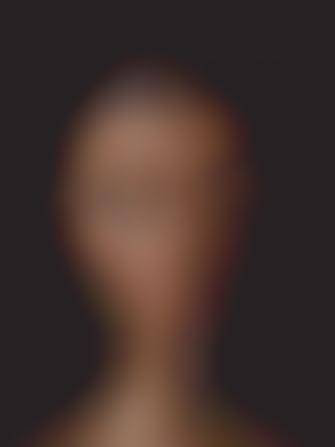
The photo has been taken in a studio setting so there is studio lighting which you can see on the left side of the subjects face and more shadow on the right side. The aperture must have a bigger number because there is a shallower depth of field which is seen in the way that the face is in focus but not the neck.
The image has been composed so the doll’s face is in the center so your focus is on the doll and its asymmetrical face.
The artist’s aim behind this image is to demonstrate unrealistic beauty standards presented through dolls. She specifically looks at it from a black identity point of view in the way that she believes black women are misrepresented in dolls. This image specifically she was trying to show how dolls always have had makeup when a real woman doesn’t always wear makeup, how a real person’s eyes are a lot smaller. In her interview, she talks about contact lenses which show in this image in the way that half of the dolls face has a green eye and the other a brown eye. Bright believes that dolls are a false representation of how women are physically formed and become unrealistic models of beauty that influence children.
This image is part of a series of images by Shiela Pree bright called Plastic bodies created in 2003. The focus of the series was the misrepresentation of black women in dolls and Barbie. It focused on unrealistic beauty standards and unrealistic body stereotypes. Sheila Pree Bright is quoted to have said ‘ Although Barbie serves as a toy for children, she represents much more. The doll somehow becomes a model of beauty, a false representation of how women are physically formed. In some cases, women will aspire to this model to the extent of deconstructing their own image by various forms of beautification. I show how these extremes are illusions by using models and dolls as the subjects’. Bright has taken the image with a main front light on the left side of the face leaving a small portion of the face in shadow. Bright’s concept, of lack of correct black female representation, ties in with other works she has done. Her work always focuses on civil rights and racial inequality.
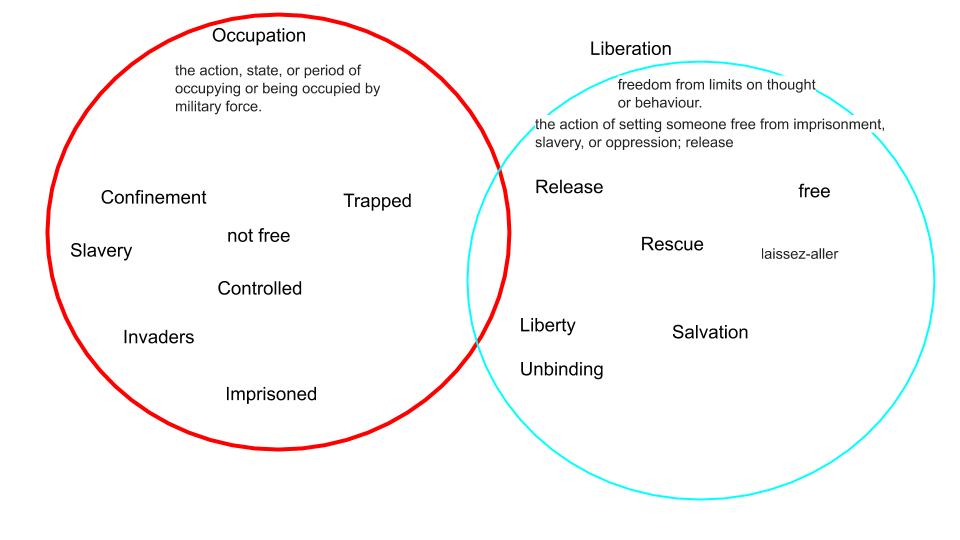
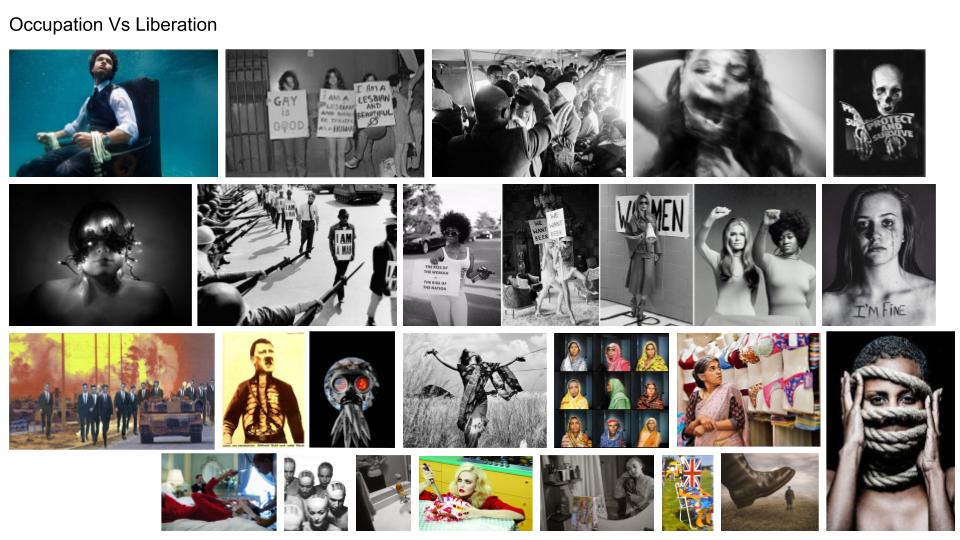
I’ve decided to focus my personal project of Socio-political ideas.

Kennard’s images focus on politics and the environment. He uses his work to criticise the Britsh government and other countries along with criticises armaments.

Bright focuses on unrealistic body and beauty expectations specifically the unrealistic and lack of representation of Africa American women in dolls. She uses editing to combine images of dolls and real images to highlight the obvious unrealisticness of the doll and to show how unrealistic the proportions of the dolls are.

Simmons uses her photography to comment on the patriarchy and the role of women in the eyes of society. The specific image above was taken in the ’70s during the second wave feminist movements.
I’ve decided I’m going to look at Bright and Simmons rather than Kennard because they have similar feminist messages that they try to convey through their work. Also, the ways that they try to convey their message is similar in the way that they set up dolls and take images. However, Simmons sets up a whole dollhouse setting with a narrative whereas bright using her editing more to convey her message. If I combine both ways I should have an eclectic mix of images with a lot of variety.